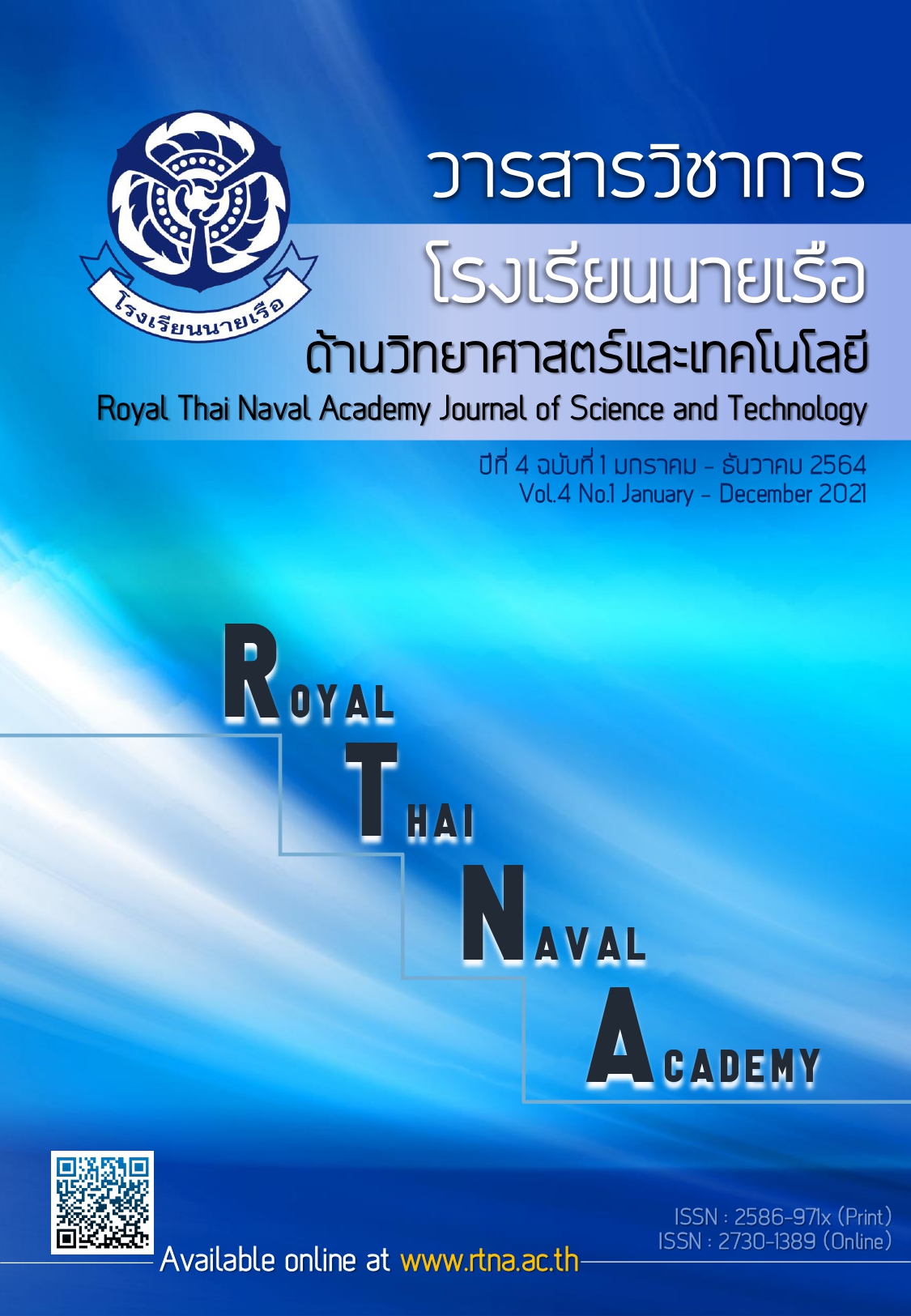Treatment of Wastewater from Iso Tank Container Cleaning Process by Using High Pressure Plasma System Ozone
Main Article Content
Abstract
Wastewater from cleaning the isotank There are many types of chemicals. It is another cause of wastewater that is difficult to treat. But with today's industries, chemicals still need to be transported on a regular basis. And how widely used Is the isotank transport Therefore applied the principles of physics engineering to design a wastewater treatment machine The waste water pump is injected into a capillary to increase the area of wastewater exposed to ozone in high pressure plasma systems. In this study, 800 mg / h of ozone was applied to 20 liters of wastewater with a flow rate of 60 liters per hour. As a result, the quality of the water used to measure water was dissolved oxygen (DO), BOD and COD of wastewater. In a short time, the DO increased from 0 to 4 mg / l in 24 minutes. Statistical analysis with R2 = 0.903 approaching 1 showed that increased DO was significantly associated with time, whereas BOD. Decreased 32.79 percent from 6,550 to 4,402.33 milligrams per liter in 12 minutes. The value R2 = 0.708 approached 1, indicating that the reduction of BOD was highly time-related and the COD decreased 14.23% from 14,375.33 down to 12,330 mg / l in 24 minutes. R2 = 0.871 close to 1 indicates that COD reductions are related to high time as well.
Article Details
The author has the sole responsibility for the material published in RTNA Journal of Science and Technology, which the editorial board may not agree on that material.
RTNA Journal of Science and Technology owns the copyright of the text, the illustration, or other material published in the journal. No parts or the whole of the material published may be disseminated or used in any form without first obtaining written permission from the academy.
References
สำนักงานคณะกรรมการสิ่งแวดล้อมแห่งชาติ. (2534). ภาวะมลพิษภัยใกล้ตัว.(พิมพ์ครั้งที่ 2). กรุงเทพฯ: สำนักงานคณะกรรมการสิ่งแวดล้อมแห่งชาติ.
Allbiz. [Retrived 24 October 2018]. ISO Tank Container. [Webblock]. from https://gujarat.all.biz/iso-tank-container-g335953.
กรมโรงงานอุตสาหกรรม. (2560). กฎหมายที่เกี่ยวข้องและการตรวจโรงงานที่มีการใช้สารเคมี. กรุงเทพฯ : กรมโรงงานอุตสาหกรรม.
ไพโรจน์ หอมอ่อน. (2558). การพัฒนาและออกแบบระบบบำบัดน้ำเสียจากโรงงานผลิตแบตเตอรี่ด้วยเทคโนโลยีโอโซนระบบพลาสมาความดันสูง. (วิทยานิพนธ์วิศวกรรมศาสตรมหาบัณฑิต, วิทยาลัยเทคโนโลยีสยาม).
Nilsson, F. (2017). Application of ozone in wastewater treatment: Oxidation of pharmaceuticals and filamentous bulking sludge. (Doctural Thesis, Lund University).
Bhatta, R., Kayastha, R., Subedi, D.P. and Joshi, R. (2015). Treatment of Wastewater by Ozone Produced in Dielectric Barrier Discharge. Journal of Chemistry, 2015, Retrieved from: http://dx.doi.org/10.1155/2015/648162
โอโซน. (สืบค้นเมื่อ 18 กันยายน 2559) จากวิกิพีเดีย https://th.wikipedia.org/wiki/โอโซน
การประปานครหลวง. (2556).โอโซน วารสารออนไลน์คลินิกน้ำสะอาด, 3(2), 9-10. สืบค้นจาก http://cwc.mwa.co.th/index.php?page=showarticlebytopic.php&id=16
Fresenius, W. and Quentin, K. E. (1988). Water Analysis. Berlin Heidelberg: Springerverlag.
Kutner, M. H., Christopher, J. and Buser, H. R. (2005). Applied Linear Statistical Models. Boston: (5th Edition, International Edition). McGraw-Hill Irwin.
Zhou, H. and Daniel, W. (2000). Ozone Mass Transfer in Water and Wastewater Treatment: Experimental Observations Using a 2D Laser Particle Dynamics Analyzer. Water Research, 2000(34), 909-9211. from: https://www.sciencedirect.com/science/article/abs/pii/S0043135499001967?via%3Dihub
Guikford, J. P. and Benjamin, F. (1973). Fundamental Statics in Psychology and Education. Tokyo: McGraw-Hill Kagakusha.
George, T. and Franklin, B. (1991). Wastewater Engineering Treatment, Disposal and Reuse. (3rd Edition).New York: McGraw - Hill.


